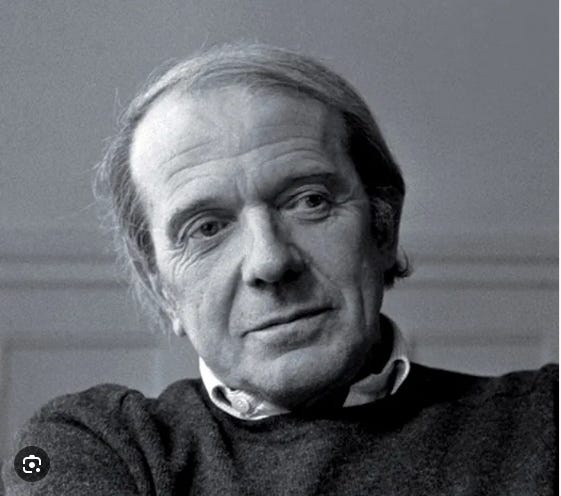The body without organs
This morning I started reading Chapter 2 of A Thousand Plateaus. It’s called ‘1914: One or several wolves?’
I read the first few pages and had no fricking idea what was being said.
This was frustrating, given that I’d been reading Chapter 1 and thinking that I was beginning to get some of this. But it the fog descended again. It was as if D&G were making sure no reader reached a premature and superficial conclusion about what was being said, so started to mess with minds again.
(It’s been so reassuring to listen to some podcasts by very intelligent and well-read philosophers and to hear them saying, in the middle of an otherwise animated conversation: ‘… but this bit makes absolutely no sense to me’. Do we teachers do enough of this in the classroom?)
D&G were getting in a lather about Freud, and his Wolfman case. Freud was, they were saying (I could tell this much) completely missing the point.
They seemed to be particularly upset that Freud felt the need to continually reduce the richness of the Wolfman’s unconscious to a single Oedipal cause. Freud kept asking the question ‘What does the wolf represent?’, ignoring the fact that the Wolfman himself described a dream with many wolves in it, a pack of them. Freud wanted to identify a singularity when it was multiplicities that were present.
This was helping to regain some sense of connection to what they were saying. I understand multiplicities and the shallowness of explanations that imagine a singularity. A classroom for example. I cringe when I hear someone (and sometimes that someone is me) talking about a ‘receptive’ or an ‘unmotivated’ class, as if it were a single organism. Even talking about a student as ‘switched on’ or ‘unengaged’ doesn’t sit well, especially when I remember the number of times I’ve sat in an audience and been switched on by one speaker and utterly unengaged by the next. These seem properties to do with some other entity, something composed of multiplicities.
And all of that is helping me make more sense of D&G’s concept of ‘the body without organs’. A classroom is a body without organs, made up of multiplicities with their different flows and intensities, and being plugged into (or disconnected from) other bodies without organs (the students), similarly made up of multiplicities.
This seems to be what they’re saying in the following two passages:
A body without organs is not an empty body stripped of organs, but a body upon which that which serves as organs (wolves, wolf eyes, wolf jaws?) is distributed according to crowd phenomena … Thus the body without organs is opposed less to organs as such than to the organisation of the organs insofar as it composes an organism. The body without organs is not a dead body but a living body all the more alive and teeming once it has blown apart the organism and its organisation. Lice hopping on the beach. Skin colonies. The full body without organs is a body populated by multiplicities. (34)
The metrical principle of these multiplicities is not to be found in a homogenous milieu but resides elsewhere, in forces at work within them, in physical phenomena inhabiting them, precisely in the libido, which constitutes them from within, and in constituting them necessarily divides into distinct qualitative and variable flows. (35)
I’m trying to push myself to see what follows from all this. What is it that this way of thinking is helping me to do (rather than explain – see last post)? What is the affect?
I think it’s helping me see that the importance of lesson planning (the subject of one of the units I’m teaching) is less to do with creating a structure for a singularity (the class) and more to do with unblocking or stimulating flows and intensities within the body without organs (the teacher-planner) which then get plugged into other bodies without organs (the students) in unpredictable but (with any luck) animating ways, into ‘forces at work within them, in physical phenomena inhabiting them, precisely in the libido’.
It’s helping me to see the ways in which a group of us working together on e-Portfolios which tell our academic stories is less to do with finding a way to tick the boxes when it comes to our annual performance review and more to do with … ‘unblocking or stimulating flows and intensities within the body without organs (each of us as individual academics) which then get plugged into other bodies without organs (each other, and also colleagues and structures with whom we share our work) in unpredictable but (with any luck) animating ways.
It’s helping me to see that student motivation is much more than a function of the fixed attributes (the socio-economic background, the intelligence, the existence of ambitions and fears) of singularities (the individual students) and more to do with … ”unblocking or stimulating flows and intensities within the body without organs (me as teacher, the class, each of the students) which then get plugged into other bodies without organs (each other, the curriculum, the school, the community) in unpredictable but (with any luck) animating ways.
The ‘helping to see’ in itself is an unblocking and stimulating. So the seeing is more than just an interpretation, a way of understanding or theorising. It’s a way of acting.





